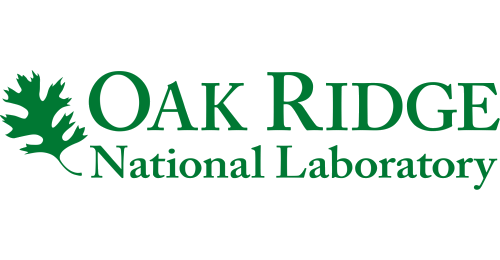Conference Agenda
Overview and details of the sessions of this conference. Please select a date or location to show only sessions at that day or location. Please select a single session for detailed view (with abstracts and downloads if available).
|
Session Overview |
| Session | ||
Workshop 2- Demonstrations and Simulations
| ||
| Session Abstract | ||
|
Workshop Two - Demonstrations and Simulations
8:00 - 8:50 - Session 1 Title: Air Sealing Existing Buildings
Abstract: Existing buildings can have high air leakage rates which can cause many problem in the building. We know we can improve these buildings and reduce deteration caused by the results of air leakage but where do we start. This presentation covers what has been learned over the past decades of retrofitting existing buildings and why this knowledge can be applied to every building across the country.
Learning Objectives:
Presenter Larry Harmon, Vice President - Confirmed Air Barrier Solutions, Inc.
9:00 - 9:50 – Break
9:00 - 9:50 - Session 2 Title: Air Leakage Modeling
Abstract: Infiltration is the unintended and uncontrolled air leaking into a building through intentional and unintentional openings but how much infiltration can you expect in a building? Empirical models for infiltration are available, but they were developed for low-rise residential buildings. This workshop will present novel ways of modeling infiltration in commercial buildings and the implications on energy use. We will also introduce CHIMP (Clearing House for Infiltration Modeling Purposes), which provides a central resource where users can obtain information, data, and tools to facilitate the modeling of infiltration in a variety of analysis tools (e.g., CONTAM, EnergyPlus, etc). Here you’ll find the models, datasets, and tools NIST has been developing for estimating the effects of infiltration on heating, ventilating, and air-conditioning (HVAC) related energy use.
Presenter: Keith Nelson
9:50 - 10:00 - break
10:00 - 10:50 - Session 3
Title: What is CFM50 not telling you? From “One Number” to a Whole Building Performance Approach
Abstract: CFM/ACH50 gives a convenient score, but it rarely matches how buildings actually leak in day-to-day weather or during smoke and outage events. Multi-point blower door testing reveals the full leakage profile at realistic pressures and can be translated into plain-language decisions that improve indoor air quality, thermal comfort, moisture control, energy use, and resilience. This session is a guided conversation: participants will trade field lessons on multi-point testing, share simple ways to handle wind/baseline effects, and examine where single-number thinking has led projects astray. Together we’ll discuss how multi-point results can inform decision-ready outputs that owners and programs can use—everyday infiltration indicators, simple smoke-entry risk cues, and outage temperature holdover expectations—and fold them into practical IAQ/Smoke and Energy/Resilience plans. Brief case examples will illustrate how moving beyond one number supports cleaner indoor air during wildfire events, steadier temperatures during outages, and lower loads year-round—without adding complexity to projects.
Presenter: Jessica Meylor– confirmed Green Building Engineering Consultant
10:50 - 11:00 - Break
11:00 - 11:50 pm - Session 4 Title: Real-Time Building Air Leakage Visualization: Demo and Research Progress
Abstract: Unwanted air leakage in buildings can waste energy, increase energy bills, compromise envelope durability, and hinder indoor comfort. To remedy this, leakage areas need to be located and sealed. Oak Ridge National Laboratory and partners are working on adapting an optical imaging technique to visualize leakage to simplify leakage point location. During this workshop we will discuss the fundamental optical technique and operating requirements. We will also demonstrate visualizing air leakage using a modest camera and custom software. Attendees will also see a demonstration of AURA, a smartphone app that utilizes the onboard camera to put air leakage visualization in the hands of everyone.
Presenters: Philip Boudreaux Confirmed Oakridge National Laboratory (ORNL)
Gurneesh Jatana, Oakridge National Laboratory (ORNL)
11:50 - 12:45 pm Break
12:45 - 1:45 pm - Sessions 5 Title: Buildings Move, Buildings Leak: Revisiting the Critical Link Between Engineering Mechanics and Enclosure Performance
Abstract: An enclosure that is appropriately responsive to its environmental loading conditions is one of the most fundamental measures of satisfactory performance for the built environment. Some loads are directly experienced by enclosure components and materials themselves, while other loads are experienced because material deformations or deflections influence those components and materials. While the relationship between structural movement and a structure’s usefulness to its intended purpose has been well understood throughout the history of design and construction, that understanding has not always translated well into satisfactory enclosure performance. Drawing on experiences in post-construction forensic investigations, troubleshooting during construction, and efforts to influence design detailing, this presentation will discuss key factors in applying engineering mechanics for the benefit (or detriment) of enclosure performance. Specific aspects to be shared will include the cross-party dynamics in design and construction that give rise to current challenges, case studies of failures as a result of insufficient consideration, and areas for improvement across the design and construction industry.
Presenter: Jon Porter, PE, Assoc. AIA Director of Building Science Confirmed KRAUS-ANDERSON CONSTRUCTION COMPANY
1:45 - 2:00 Break
2:00 - 3:00 - Session 6 Title: Self-Adhered Membrane Applications: What Does It Really Mean to Stick”
Abstract: Self-adhered membranes are popular for their ease of use and reliability in air and moisture control. However, performance depends on more than peel adhesion. This session reviews the forces these membranes must resist—wind, stack effect, and pressurization—and explores how to properly evaluate long-term durability under real conditions. Learn why comprehensive performance testing is essential when specifying or inspecting these systems.
Presenter: Cody Shelner Confirmed Head of Marketing, Air and Waterproofing Functional Coatings LLC
| ||
| No contributions were assigned to this session. |

